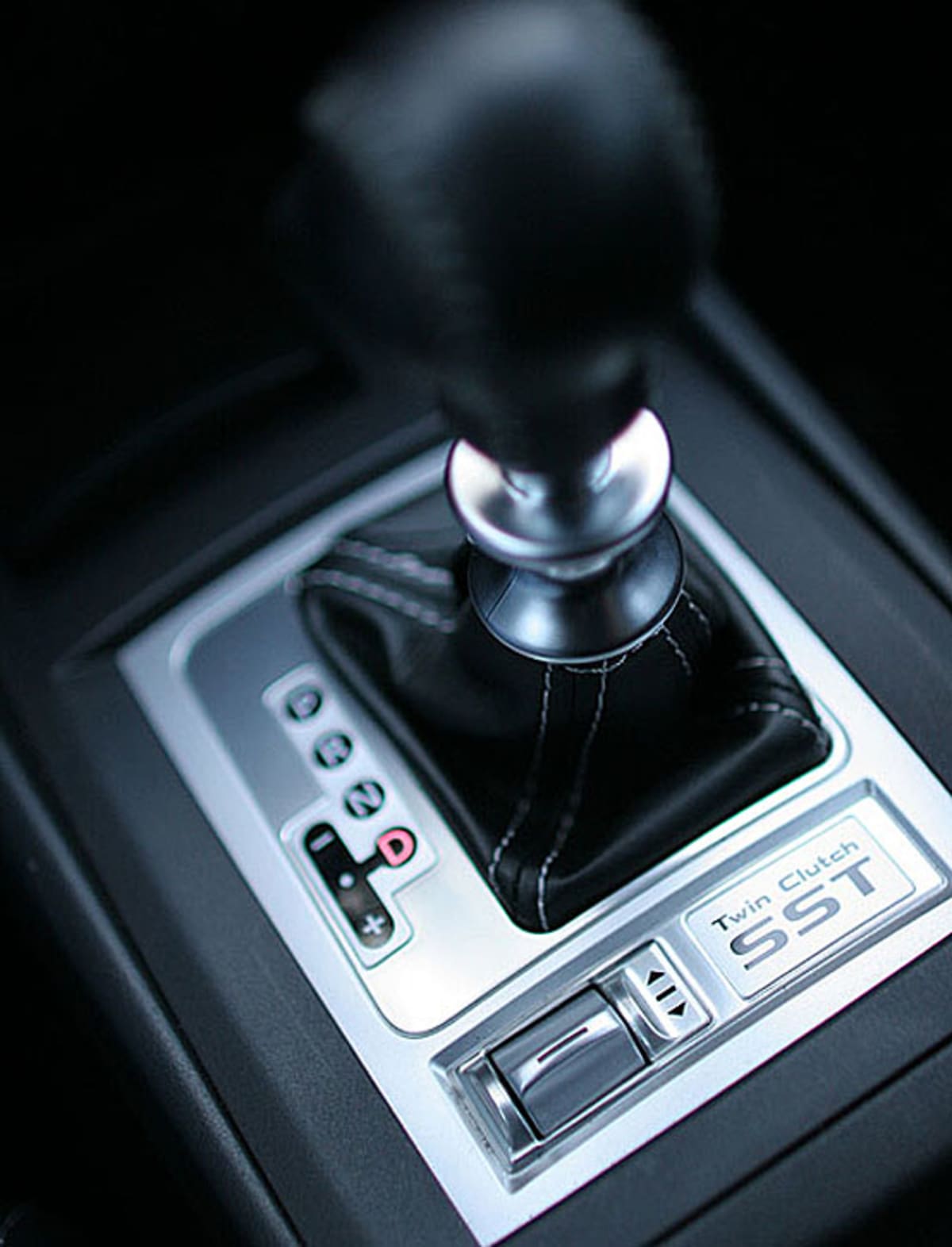2011 VOLKSWAGEN GOLF TDI REVIEW
Dr. Diesel and The Doubtful Diane
This article is from our archives and has not been updated and integrated with our "new" site yet... Even so, it's still awesome - so keep reading!
Published on Sun, Oct 16, 2011
By: The LACar Editorial Staff

By Zoran Segina
Diane never met Dr. Rudolf Christian Karl Diesel, a brilliant French-German engineer whose 1887 treatise entitled “Theory and Construction of a Rational Heat-engine to Replace the Steam Engine and Combustion Engines Known Today” became the basis for his invention of the modern diesel engine. Diane was born decades after Dr. Diesel’s mysterious demise in the English Channel in September 1913. And yet they have a lot in common. Both have brilliant analytical minds. Like Diesel’s uncle, Diane was a mathematician. And then she became a lawyer. Diane’s step-by-step detailed evaluation of all points “for” and “against” is evident when we discuss a replacement for the old family van at the twilight of its automotive existence. Diane’s requirements in choosing a car—the famous “it” factor—are straightforward. The vehicle has to be: (1) easy to operate, (2) reliable, and (3) ready to work like a horse. The next condition is unexpected. “I will not drive a diesel,” she states authoritatively.
Diane finds diesel engines noisy and smelly. She is fortunate not to have had personal experience with the General Motors’ infamous 5.7 liter eight-cylinder diesel and its two smaller siblings. From 1975 on, GM sold over one million engines that were improperly designed for the higher pressures and temperatures of diesel use. Combined with the bad diesel fuel in the eighties, these shortcomings caused pistons, cylinder heads, and even cylinder walls to break. The fiasco resulted in a class-action lawsuit and the arbitration program under auspices of the Federal Trade Commission with buyback program involving no time or mileage limits and eighty percent original replacement cost.

The reverse of “what’s good for GM is good for America” ruined the reputation of diesel engines in the U.S. It even affected such stalwart brands as Mercedes-Benz whose U.S. sales, until then, were eighty percent diesel. Unlike in Western Europe, where it is estimated that about forty-five percent of new cars are diesel-powered, here they historically accounted for approximately one to three and a half percent. (Market share in 2006, including light trucks). If our numbers came closer to the Europeans’, the United States could save billions per year in fuel costs. Ironically, GM has become a leader in sales of diesel engines in Europe and Asia.
We stand in front of the 2011 Volkswagen Golf TDI, while I wax poetic. The 2.0 liter turbocharged diesel uses common-rail direct injection technology—a shared delivery ‘pipe’ for all fuel injectors. Fuel flows at a consistent, very highly pressurized rate for a complete burnout. As a result, the emission is exceptionally clean. Even after I hold a white rag against the twin exhaust pipes, the rag remains pristine white. Diane checks the smell and finds it satisfactory. She then walks of the front of the car. The hood is raised. “It is still noisy,” she observes while checking the hood insulation. Tests by another manufacturer, a co-developer of the common-rail technology with Volkswagen, show that their car is the quietest diesel the company has ever offered in the U.S., with 44 decibels at idle compared with 42 decibels for the comparable gasoline-powered sedan. At full throttle, the diesel is slightly quieter than the gasoline model (72 db v. 76 db). But Golf is a smaller car, and some diesel engine noise is inevitable.

Diane checks the back seat. The Golf is surprisingly roomy. The rear armrest, with built-in cupholders, can be collapsed for transporting long items such as skis. The rear seats can be collapsed for more cargo room. The Golf’s offers austere interior, but the gaps between panels are tight and precise. The ride is firm in the typical European manner where tighter suspension contributes to crisper and more precise handling. There are quirks, though. Wash and wipe system for front and rear wiper is integrated in a single stalk, and can be confusing. Under the front passenger seat there is a black styrofoam box that looks like something forgotten at an assembly line. But overall, the car exudes German craftsmanship.
Diane wants to know about crash ratings. I dig out on the internet the ratings for all Volkswagen Golf models and they are among the highest of any economy car. Insurance Institute for Highway Safety lists the Golf as a Top Safety Pick, with the highest rating of Good in front, side, rear and rollover roof-strength tests. NHTSA crash tests show that the Golf earns perfect five-star ratings in side crashes, with four stars for frontal crash protection and rollover avoidance.
Then comes the final inquiry: “I have been driving from my home to here every day and I do not see many pumps that sell diesel fuel. How convenient is this car compared to the gas-powered?” I am stumped. The 2011 Golf TDI has an EPA consumption rating of 30 miles per gallon in the city and 42 on the highway. You may not drive by many diesel pumps but you won’t have to. After 333 miles, the 14.5 gallon fuel tank has enough reserve for a trip to San Diego—a 135 extra miles. This translates to an overall average of 32 miles per gallon. Moreover, one does not need the carbon-based fuel to power this engine. Dr. Diesel’s original engine ran on peanut oil. Then there is also bio-diesel, and different vegetable oils, but a prospective earth-saving owner would be well advised to check the VW warranty before filling up at the local grocery store. Not to mention the looks of the shoppers.
I promise to Diane that I will do additional research on the availability of diesel fuel on her commuter route, and get back to her. Ah, those brilliant critical minds.

SIDEBAR COMMENT
The TDI package turns the Golf into a lean, green and slightly mean machine. Notwithstanding the EPA ratings, the TDI is famous is getting upwards of 50 miles per gallon by gas mileage hypermilers. The TDI also emits 25 percent less greenhouse gas compared to a similar gasoline engine. But the Golf TDI is not just about being green. The fit and finish of the car is remarkably good - comparable to what one expects from a higher line European car. Diesel engines have a reputation for exhibiting lots of off-the-line low end torque, and the Golf TDI is no exception. It’s great for zipping in and out of rush hour traffic. Alas, the TDI lacks the upper end pull of the GTI. You won’t be able enjoy going through the gears at higher RPMs like you can with the GTI. On the other hand, it does borrow some of the GTI’s sport suspension components. Thus, you’ll enjoy the benefits of GTI-like jack rabbit starts and romp through the twisties. Not bad for a car that gets over 40 miles per gallon. – Roy Nakano
For more information about Volkswagen products, go to vw.com

SPECIFICATIONS Name of vehicle: 2011 Volkswagen Golf TDI Price: $23,999 (base) $24,955 (as tested) EPA fuel economy rating: 30 mpg city/42 mpg highway Engine: 2.0-liter inline four cylinder, common-rail, direct-injection turbocharged TDI diesel Horsepower: 140 at 4000 rpm Torque: 236 pound-feet at 1750 rpm Transmission: 6-speed manual (6-speed DSG automatic with Tiptronic optional) Drive configuration: Front-wheel drive Steering: Electro-mechanical, variably-assisted, power rack-and-pinion system Suspension Front: fully independent suspension with McPherson struts and an anti-roll bar comes standard on the base Golf, while the TDI models include an updated sport suspension Rear: fully independent four-link arrangement with coil springs, telescopic shocks and stabilizer bar Brakes: Power assisted four wheel disc brakes, with vented rotors at the front and solid rotors at the rear, Anti-lock Braking System (ABS), Electronic Stability Program (ESP®) – includes traction and safety features such as Anti-Slip Regulation (ASR), Electronic Differential Lock (EDL), Hydraulic Brake Assist (HBA), and Electronic Brake-pressure Distribution (EBD) Wheels and tires 17-inch alloy wheels with 225-45/R17 all-season tires Dimensions Length: 165.4 inches Width: 7.3 inches Height: 58.3 inches Curb weight: 3041 pounds Performance 0-60 mph in 8.6 seconds Top Speed: 125 mph electronically limited




